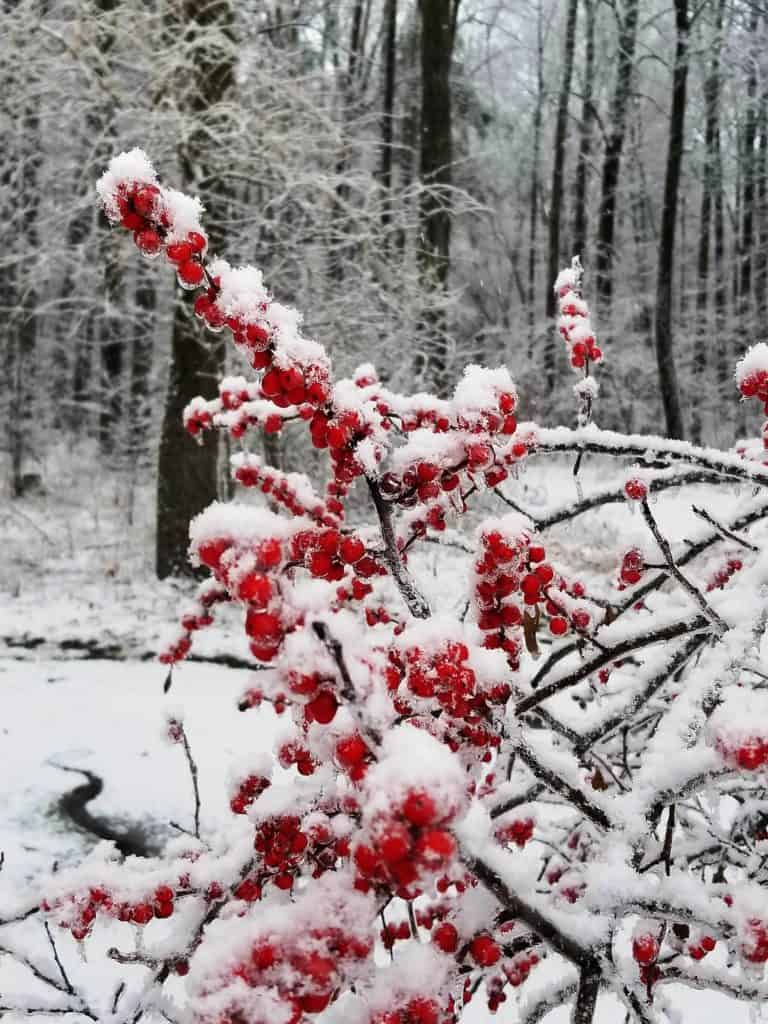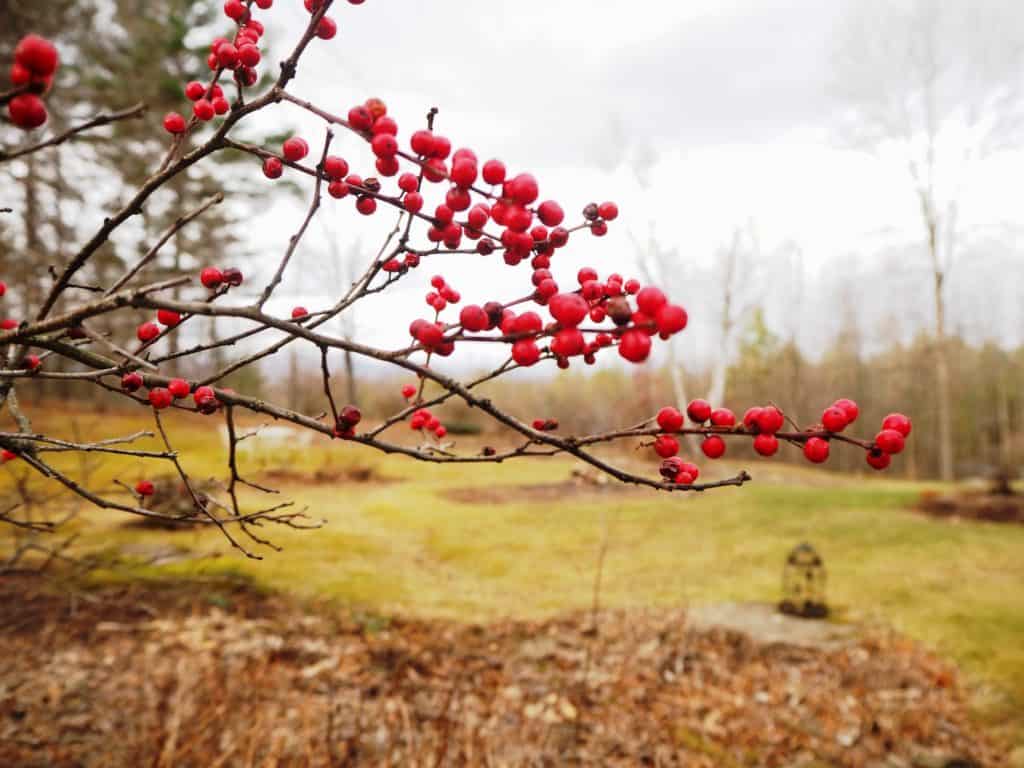
By Nadie VanZandt, Extension Master Gardener intern, University of Vermont
Dominated by shades of gray, the landscape appears bleak in winter. Look closer and you may glimpse muted mauves in the distant mountains or the warm glow that envelopes the land at the golden hour.
If that doesn’t satisfy your yearning for color, consider planting winterberry shrubs. Their allure is in the brilliant red berries that add a welcome splash of color to the winter landscape.
A native woody shrub of North America, the winterberry (Ilex verticillata) is one of 30 species of deciduous holly hardy in U.S. plant hardiness zones 3 through 9. Commonly referred to as black alder or winterberry holly, it grows erect to a height of 5 -12 feet with a similar spread.
In spring, its slender branches are covered with small green leaves followed by clusters of tiny white flowers, about ¼- inch wide, that grow in the leaves’ axils (near the stem). In the fall, after shedding its leaves, the shrub reveals an impressive mass of berries of brilliant color varying from bright red to deep orange to golden yellow, depending on the cultivar.

Laden with brilliant berries, this shrub is even more striking in winter against a backdrop of snow and bare trees.
In addition to aesthetic year-round appeal, winterberries do not mind wet feet. They are ideal for boggy areas or rain gardens. In their natural habitat they grow in water-logged sites, swamps and near streams and ponds. In such wet environments they tend to form thickets and develop suckers, yet they are not invasive.
As is typical of the genus, the winterberry is dioecious, which means that each plant is either male or female. The gender is identified by the characteristic of its blossoms.
The male winterberry produces staminate flowers (with stamens) while the female produces pistillate flowers (with pistils). Since only pistillate flowers produce fruit, winterberries require a strategic planting of male and female plants to maximize pollination by insects for an abundance of berries.
Planting one male plant for every four or five female plants will optimize pollination and fruit production. Botanists recommend locating a male plant within 40 feet of a female plant. It is important to select male and female plants of the same flowering period for proper pollination by bees and butterflies.
Planting enough shrubs to share with wildlife could enhance the berry show in fall and winter. Many species of birds use this shrub for their nests and eat the berries. Although not a favorite of deer and moose, these mammals occasionally browse on winterberry stems and leaves.
The best time to plant winterberries is in the spring. They are sold as bare rootstock, in containers or balled and burlapped. They grow well in full sun to part shade and thrive in moist soil, rich in humus, with a pH of 4.5-6.5. Be sure to take a soil sample to check the pH of the planting site, and amend the soil accordingly.
Winterberries look best planted “en masse” as a backdrop to other plants or at the forest edge. Space them 3 to 5 feet apart, measuring from center to center. For best results, follow the planting guidelines recommended by the nursery where you purchase your plants.
Once established after two to three years in the ground, you can trim suckers and prune them to shape before growth emerges in early spring. As a bonus, winterberry branches with scarlet berries make attractive floral arrangements both indoors and outdoors during fall and winter.
This winter as you map out the plants you would like to add this year, consider giving this amazing native the place it deserves in your garden.




